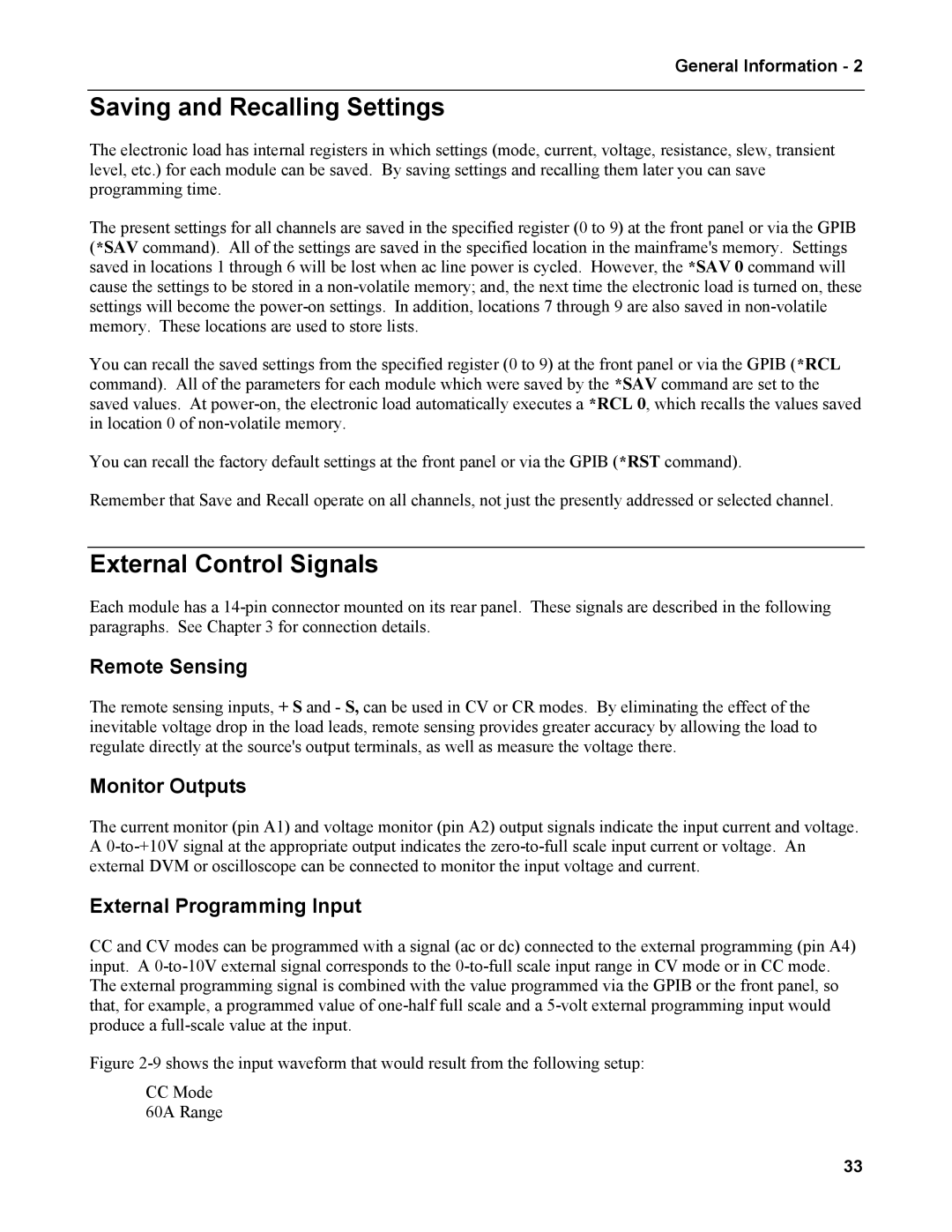
General Information - 2
Saving and Recalling Settings
The electronic load has internal registers in which settings (mode, current, voltage, resistance, slew, transient level, etc.) for each module can be saved. By saving settings and recalling them later you can save programming time.
The present settings for all channels are saved in the specified register (0 to 9) at the front panel or via the GPIB (*SAV command). All of the settings are saved in the specified location in the mainframe's memory. Settings saved in locations 1 through 6 will be lost when ac line power is cycled. However, the *SAV 0 command will cause the settings to be stored in a
You can recall the saved settings from the specified register (0 to 9) at the front panel or via the GPIB (*RCL command). All of the parameters for each module which were saved by the *SAV command are set to the saved values. At
You can recall the factory default settings at the front panel or via the GPIB (*RST command).
Remember that Save and Recall operate on all channels, not just the presently addressed or selected channel.
External Control Signals
Each module has a
Remote Sensing
The remote sensing inputs, + S and - S, can be used in CV or CR modes. By eliminating the effect of the inevitable voltage drop in the load leads, remote sensing provides greater accuracy by allowing the load to regulate directly at the source's output terminals, as well as measure the voltage there.
Monitor Outputs
The current monitor (pin A1) and voltage monitor (pin A2) output signals indicate the input current and voltage. A
External Programming Input
CCand CV modes can be programmed with a signal (ac or dc) connected to the external programming (pin A4) input. A
Figure 2-9 shows the input waveform that would result from the following setup:
CCMode
60A Range
33
